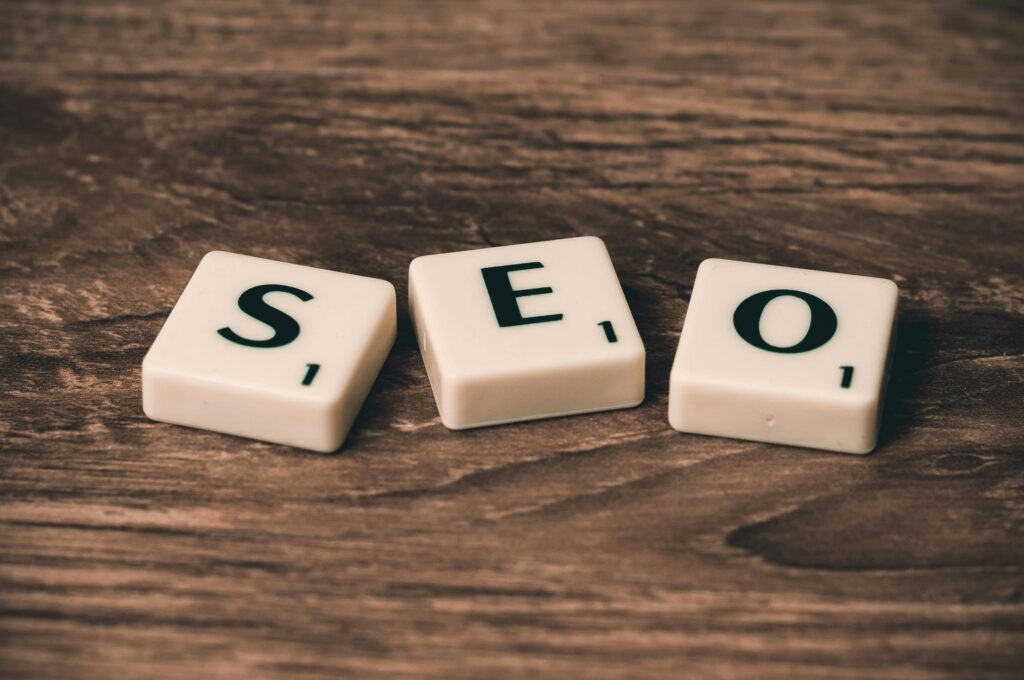Design without SEO is like building a billboard in the middle of a desert—beautiful but invisible.
Many websites look great, but they rank poorly because they ignore search engine optimization (SEO) during the design process. The truth is, SEO and design are not separate—they’re partners. The best websites blend style with structure, performance with purpose.
If you want your site to be seen and drive traffic, here are 8 SEO-friendly web design essentials you can’t afford to miss.

✅ 1. Mobile-First, Responsive Design
Why it matters:
Google uses mobile-first indexing—meaning it looks at your site’s mobile version to rank it. If your site isn’t mobile-friendly, it will struggle to rank, no matter how good your content is.
What to do:
- Use a responsive layout that adjusts to screen sizes
- Optimize font size, spacing, and buttons for tap access
- Test your site on Google’s Mobile-Friendly Test
Over 60% of Google searches now happen on mobile. Your site must perform flawlessly on small screens.
✅ 2. Fast Load Speed
Why it matters:
Page speed is a confirmed ranking factor. Plus, 40% of users leave if a site takes more than 3 seconds to load.
What to do:
- Compress images (use formats like WebP)
- Minimize JavaScript and CSS files
- Use a Content Delivery Network (CDN)
- Enable lazy loading for images/videos
- Choose fast hosting
Bonus tip: Run speed tests using PageSpeed Insights, GTmetrix, or Pingdom.
✅ 3. Clean, Crawlable Code
Why it matters:
Search engines use bots (crawlers) to scan your site. If your code is messy, bloated, or confusing, they may miss important content.
What to do:
- Avoid using too much JavaScript to load critical content
- Use semantic HTML (e.g.,
<header>,<main>,<footer>,<article>) - Structure content with proper heading tags:
<h1>once per page, then<h2>,<h3>, etc. - Use schema markup (structured data) to help Google understand your content
Good code is like good signage—it helps both users and bots navigate easily.
✅ 4. Optimized Site Architecture
Why it matters:
Flat, organized site structures make it easier for search engines to crawl pages and for users to find content quickly.
What to do:
- Use a clear hierarchy: Homepage → Category → Subpage
- Keep important pages 2–3 clicks from the homepage
- Use internal linking to connect related pages
- Create a sitemap and submit it to Google Search Console
Pro tip: Think like a librarian. Everything should have a logical place.
✅ 5. SEO-Friendly URLs
Why it matters:
Clean, descriptive URLs improve user trust, help rankings, and make it easier for Google to understand your pages.
What to do:
- Use short, readable URLs:
✅/seo-friendly-web-design
❌/page-id=93874&type=landing-2 - Include keywords naturally
- Use hyphens
-, not underscores_ - Avoid unnecessary parameters
Every URL is a chance to reinforce what the page is about.
✅ 6. Image Optimization for SEO
Why it matters:
Images can slow down your site if not optimized—and they’re also a missed opportunity for ranking in Google Images.
What to do:
- Compress files before uploading
- Add descriptive file names (e.g.,
seo-web-design.png) - Use alt text that describes the image and includes relevant keywords
- Add image captions where appropriate
Bonus: Alt text also improves accessibility for users with visual impairments.
✅ 7. User Experience (UX) That Keeps People Engaged
Why it matters:
Google tracks behavioral signals like bounce rate, time on site, and pages per session. Good UX keeps visitors engaged, which indirectly boosts rankings.
What to do:
- Use scannable content with headings, bullets, and short paragraphs
- Ensure strong visual hierarchy and readable typography
- Keep navigation intuitive
- Eliminate pop-ups that interrupt mobile users
A site that users enjoy is a site Google wants to recommend.
✅ 8. Secure and Accessible Design
Why it matters:
Google prefers secure and accessible websites. HTTPS is a ranking factor, and accessible design improves UX for all users.
What to do:
- Get an SSL certificate (
https://) - Follow WCAG accessibility standards:
- Use sufficient color contrast
- Ensure keyboard navigation works
- Add ARIA labels for screen readers
- Include descriptive link text (e.g., “Download SEO Guide” vs “Click here”)
Secure + accessible = future-proof.
💡 Bonus: Design with Content in Mind
Content is at the heart of SEO—but it only performs when presented well.
- Don’t design first and squeeze content in later
- Build layouts that make content readable and enjoyable
- Use blog cards, pull quotes, and structured blocks to showcase posts
Collaboration between designers, SEO strategists, and copywriters leads to websites that both rank and convert.
🧠 Final Thoughts
SEO-friendly web design is not about stuffing keywords—it’s about building a fast, accessible, and enjoyable site that search engines can understand and users love to explore.
If you’re planning a redesign or building a site from scratch, make sure you bake SEO into the foundation—not just sprinkle it on top.
Because when design and SEO work together, the result is not just a beautiful site—it’s a visible, high-performing asset.
